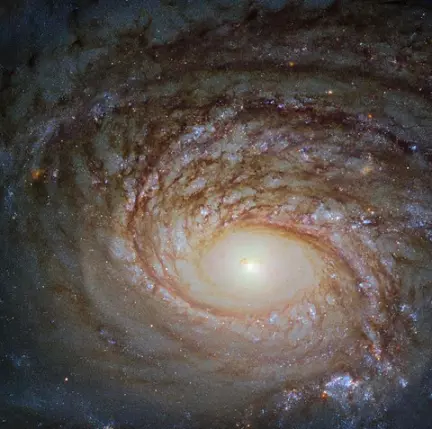NGC 772 (Arp 78) is an unbarred spiral galaxy located in the direction of Aries constellation. It is approximately 130 million light years from Earth.
Two supernovae were seen in the galaxy within three weeks in 2003, SN 2003 hl and SN 2003 iq.
The galaxy’s coordinates are 01h 59m 19.6s (right ascension) and +19°00’27” (declination). It is believed to have a H II nucleus. The galaxy’s apparent dimensions are 7′.2×4′.3.

The Universe is simply so vast that it can be difficult to maintain a sense of scale. Many galaxies we see through telescopes such as the NASA/ESA Hubble Space Telescope, the source of this beautiful Picture of the Week, look relatively similar: spiralling arms, a glowing centre, and a mixture of bright specks of star formation and dark ripples of cosmic dust weaving throughout. This galaxy, a spiral galaxy named NGC 772, is no exception. It actually has much in common with our home galaxy, the Milky Way. Each boasts a few satellite galaxies, small galaxies that closely orbit and are gravitationally bound to their parent galaxies. One of NGC 772’s spiral arms has been distorted and disrupted by one of these satellites (NGC 770 — not visible in the image here), leaving it elongated and asymmetrical. However, the two are also different in a few key ways. For one, NGC 772 is both a peculiar and an unbarred spiral galaxy; respectively, this means that it is somewhat odd in size, shape, or composition, and that it lacks a central feature known as a bar, which we see in many galaxies throughout the cosmos — including the Milky Way. These bars are built of gas and stars, and are thought to funnel and transport material through the galactic core, possibly fueling and igniting various processes such as star formation. Image: ESA/Hubble & NASA, A. Seth et al.
NGC 772 has a satellite galaxy, NGC 770. NGC 770 is a very faint elliptical galaxy, classified as type E3 dwarf spiral, also located in Aries.